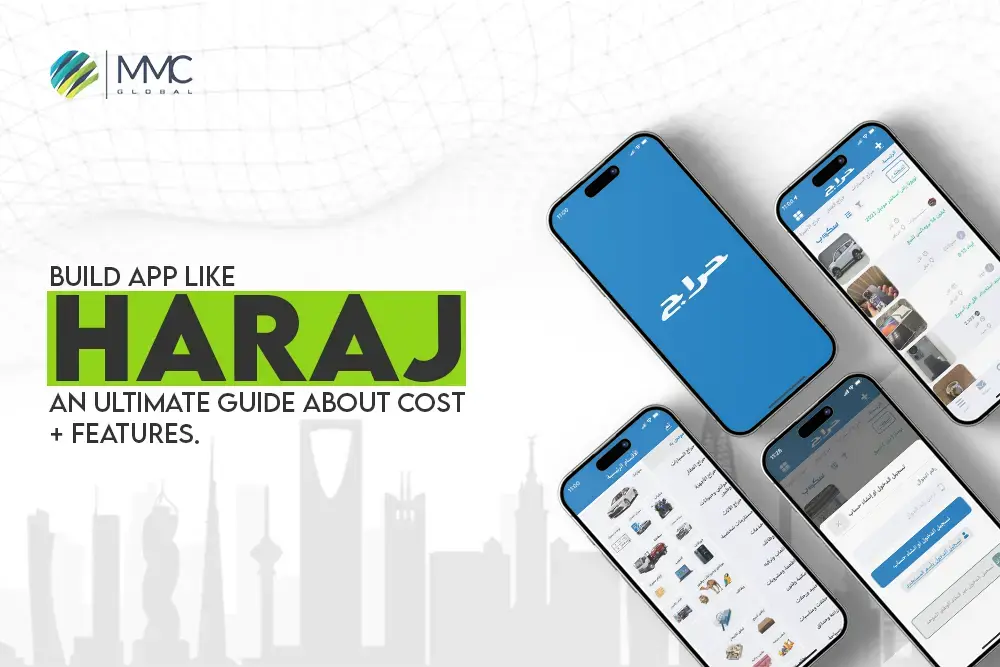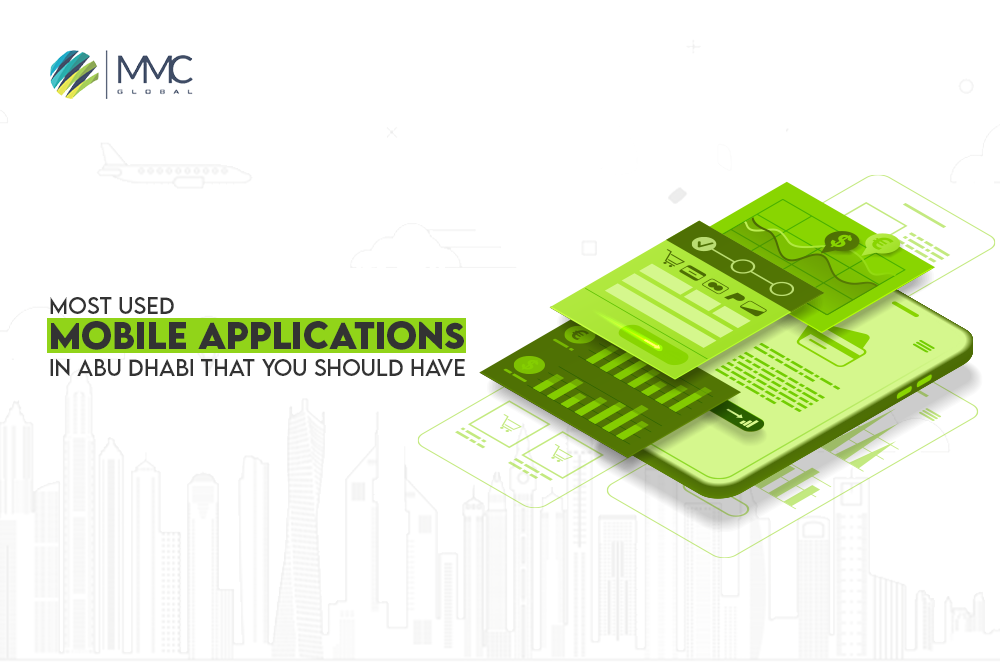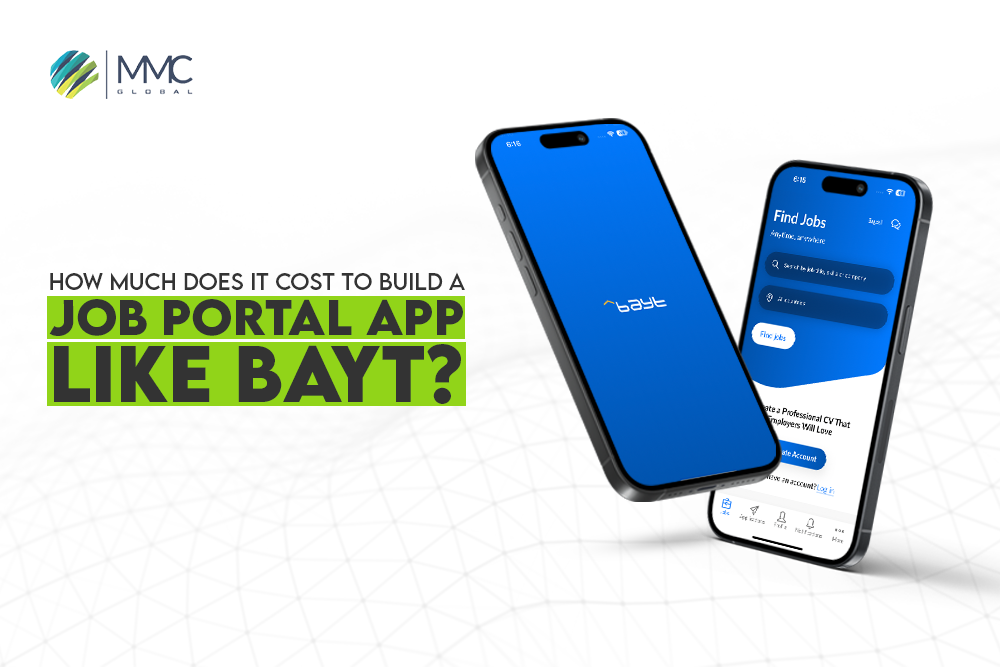Wearable Application Development – A Rising Technology In 2022
Wearable devices are one of the exciting yet most beneficial technologies connected with wearable applications to transfer data and provide real-time insights per their functionalities. Smartwatches are the primary examples of wearable devices integrated with wearable apps. You can easily access multiple mobile applications that allow you to connect with your smartwatch.
Moreover, the concept of wearables is unique and helps in the healthcare sector as developers are capable enough to build wearable devices like wristbands, health monitors, etc. The motive for writing this article is to elaborate on the concept of wearable application development. Its features and real-life examples that you can explore.
So if you make up your mind to integrate your wearable devices into an application or any current application, then no worries. MMCGBL is here to help you with this. Our developers are excited to build amazing apps or assist in monitoring human health.
Let’s get to know about wearable application development and how it works.
What is Wearable Application Development?
Before jumping on wearable app development, let’s explore what wearables or wearable devices are.
Wearables or wearable devices are digital accessories worn on the body, such as on the wrist, foot, skin, or even clothes. It is mainly integrated with mobile apps to swap data from the network to the devices.
Apps that use such wearable technology are known as “wearable applications,” The specialized developers put their effort into extensive yet latest wearable application development. In addition, Wearable apps have accessibility to the hardware and operating system of the device. These sensors gather the data sent to the designed software to provide the intended result.
However, there are numerous options here on the wearables market right now. Fitness bands, smartwatches, activity trackers, and even smart eyewear have already become a significant part of our daily lives. The day is close when their popularity is anticipated to continue to rise.
By 2025, it is anticipated that the market for wearable electronics will be worth $74 billion.
Mobile Apps Vs. Wearable Devices
Limited Functionalities of mobile apps
Mobile app development is based on a vast codebase and can be customized per requirement. Professional developers build mobile apps after getting the conditions, setting the goal, and sticking to it until the deployment. There is a big ground to play when developing mobile as you can add multiple features and functionalities. On the other hand, wearable devices have minimal functionalities and do not have access to make them more functional. Moreover, wearable apps are not cross-platform as they only support device-specific APIs.
User Interface
Wearable devices have a compact user interface as they are mini devices. Wearables cannot be gigantic displays to make them easy to carry on the body. In addition, wearable devices work for specific user interfaces, so we can not be labeled as cross-platform devices. The developers put their effort into making a compact yet clear user interface.
On the other hand, mobile apps have the flexibility to build native or cross-platform apps and set up UIs for multiple devices. Developers are very careful while developing the user interface, as it is the ultimate approach to delivering a better user experience. It is important to provide a streamlined user experience on multiple devices if you build cross-platform app development, such as on desktop, mobile, tabs, etc.
Commutability
Mobile apps always run on smartphones, and users can easily operate and manage them within mobile devices. You can install or uninstall apps as per your need.
Moreover, wearable devices are accessories that can be worn or attached to your body. It is also easy to commute, but there is a restriction that you can not keep it far away from you if you want it to function. A sensor in wearables can fetch the sensation of your body.
Types Of Wearable Devices
Let’s look at the types of wearable devices trending worldwide, and developers are finding more ideas to throw at world-class wearable application development.
Smart Watches
The most common wearable devices are smart watches that look stylish and work like smartphones. Smartwatches have the ability to integrate with your phones and get access to your phone calls, messaging, alarms, and other notifications.
The manufacturing of smartwatches is anticipated to increase between 2019 and 2023.
Healthcare monitoring Devices
Caring is now easy with several healthcare wearable devices such as monitoring heart pulse rate, sugar, calories, blood pressure, etc.
Additionally, more than 41% of Americans support using these trackers for research and health monitoring, including tracking heart ailments.
These wearables are a game-changer in the healthcare industry as they provide real-time health conditions and make aiding quick and on the spot. Many healthcare devices have been introduced, such as wearable ECG monitors, blood pressure devices, biosensors, etc.
The market for health wearables reached 223 million units in 2019 and continues to rise.
Head-Mounted Display
It is a helmet-like wearable device used in experimenting or even playing 3D games to experience the superimposed vision and overlay digital images in a real-world environment. The most obvious example of such a gadget is a pair of VR glasses. This type of wearable application development can serve as a monitor or show people information in augmented reality and virtual reality.
The market for smart glasses is expected to reach $20 billion by 2022.
Smart Jewelry
The exemplary wearable devices can be used as an ornament. Still, the hidden side is that these jewelry are smart enough to track, record voices, and even capture the moments if there’s any camera access. Such as a small ring that is integrated with wearable applications! These small gadgets monitor physical activity and gather data sent to smartphones for additional user involvement.
Additionally, there are less common wearable devices like implantable devices and smart clothing.
Moreover, the healthcare sector is extremely important to wearable technology and wearable application development. Patients who use glucose monitors can keep alert & can track their blood sugar levels from anywhere and anytime. Several diagnostic trackers detect muscle activity, body temperature, chronic disorders, etc.
Real-Life Example Of Wearable Application Development
Wearable technology is already a s aspect of our daily life. However, wearable software may track physical activity, monitor sleep, assist users in organizing their days, and more. There is a long way to go in the healthcare and medical industry.
The top 10 wearable applications, which have millions of users globally, are listed below.
Let’s gather some ideas for your next wearable application development.
Calm
This wearable application development aims to improve sleep time and meditation. Almost half of the USA residents complain about their sleeping time and are fed up with their daytime sleepiness. 35.2% of all adults in the U.S report sleeping on average for less than seven hours per night.
Take it into consideration that Calm and these types of applications can help users to sleep faster, that are ultimately good for their health. The app contains calming melodies, images, and breathing exercises for reducing stress and meditation.
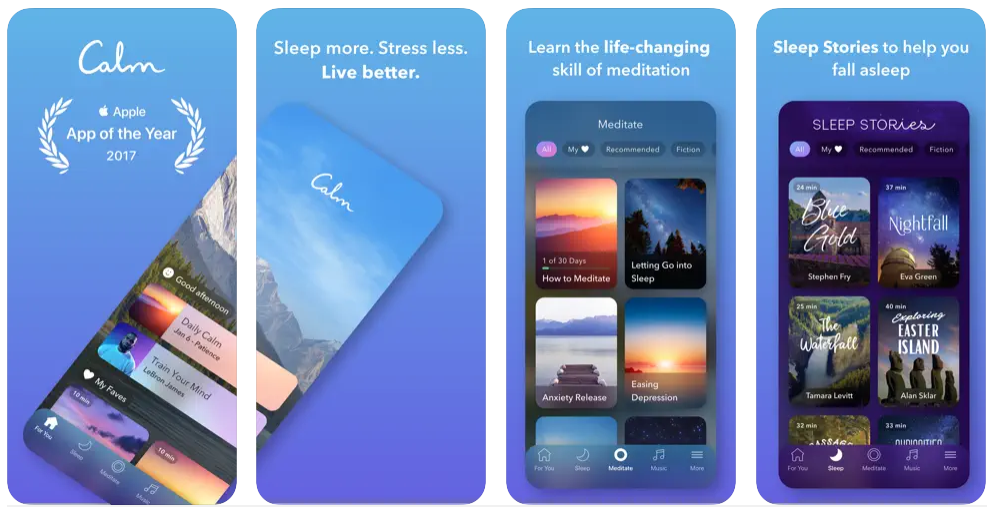
Spotify
Another wearable application development in the music industry is Shopify!
There is a wearable version of this popular music app. Users may go for a stroll or a jog while listening to their favorite music, leaving their cell phones at home.
With its various capabilities, the wearable application enables users to create their songs collection, share them with friends, explore new music, and manage it directly from their wrists and smartwatches. Spotify can integrate into your wearable devices and let the user help to enjoy music without a handful of gadgets.
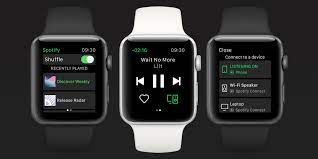
Minute Workout
When it comes to people who don’t want to work out for hours on end, this wearable application development is a lifesaver. Furthermore, the 12 high-intensity activities in the 7 Minute Workout app include estimated rest and workout times. Users may exercise at home and choose a training regimen suitable for their unique physical demands and skills.
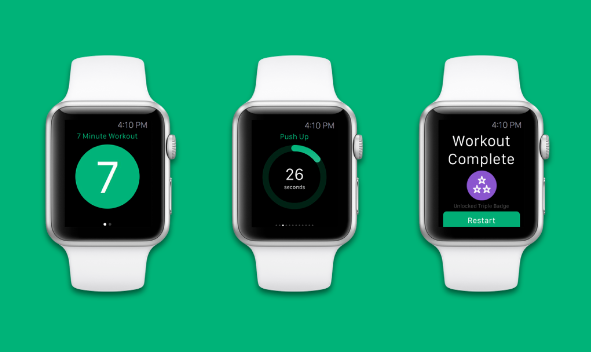
Calculator
Now the use of smartphones for minor things like calculators is no more important if you have a calculator in your smartwatch. Thankfully, these apps run Android Wear and may do the calculations via a wearable application. It may be used for scientific computations and simple maths (trigonometric, square root).
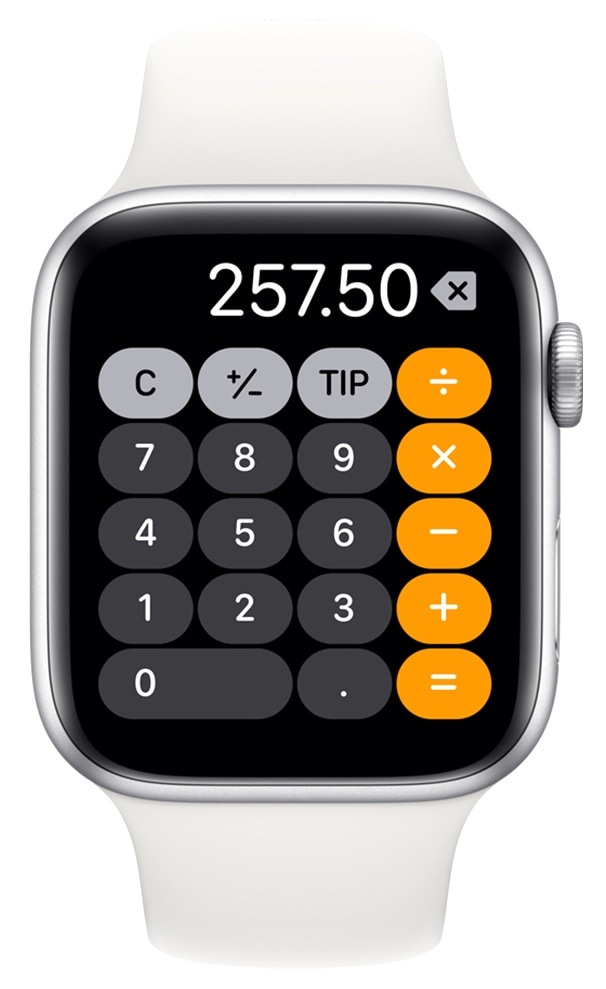
Cardiogram
A wonderful use case of a wearable app utilized for healthcare is Cardiogram. This solution measures sleep, stress, fitness activities, and minute-to-minute heart rate. It is supported for Android Wear and watchOS.
Moreover, any detected anomalies in a user’s heart rate are also explained by the application’s indication of potential causes.
90% of Americans utilized a mobile health app with a fitness tracker in 2020.
Telegram
One of the most renowned messaging platforms, Telegram, is utilized by millions worldwide. Did you know that Android Wear is now able to use it?
Now, the device on your wrist may browse your conversations, form groups, and send instant messages to your loved ones. This software’s absence of adverts and membership fees is a remarkable feature.
You may create custom themes for Telegram’s wearable version and switch them out whenever you choose. Across all your devices, this software is easy to use, quick, and safe.
RunKeeper
RunKeeper wearable application development tracks your fitness, such as your running time, workout time, and the number of steps taken in your walk. The fitness industry enjoys huge popularity thanks to the software Runkeeper. Installing this application on your wristwatch will enable you to monitor your workout and running schedule. Use it to create objectives for fitness-related things like running pace and weight loss.
Infinity Loop
Considering the small screen size, it could seem absurd to you to play games on a wristwatch. Right? On the other hand, Infinity Loop is here to make you reconsider this. In the genre of the game, it’s a fascinating app.
While on the road or waiting for the next subway, you may unwind by playing this puzzle game. It is also a great approach to developing your thinking abilities. The game has an endless number of levels. The game allows you to advance by constructing complex looping patterns.
Bottom Line
Although wearable application development is the fastest-growing technology, people use it most frequently. However, there is a long way to go to achieve more concepts in wearable devices as few industries have adopted the healthcare industry, entertainment industry, etc.
Future trends indicate that the adoption of wearable app development will increase—the advantages of keeping up with new technology and capturing market share with a worthwhile offering.
Wearable application development may enhance the user experience of your mobile app or serve as a stand-alone solution with special functionalities. You may try these and other top wearable applications on your wristwatch. Even if the applications on this list are the most relevant ones, the market is full of many more good ones.
Try to make your wearable app. Give us a chance to help you with this. Our out-of-the-box wearable application development ideas will never get you disappointed.
FAQs Related To Wearable Application Development
What is wearable technology?
Digital gadgets worn on the body and integrated into a mobile app to transfer data, get notifications, and make them functional are wearable technology.
Who can use wearable applications?
It depends! Wearable applications are made for specific purposes and target people. For example, a glucose monitoring wearable can track the sugar level in the body. Diabetic patients can use this type of app.
Who can help me in wearable application development?
Find an impassable wearable application development that can help you build such types of apps to enhance user experience at the next level. MMC GBL is one of the leading companies and owns specialized software and mobile application developers for handling challenging projects. Let’s connect!

